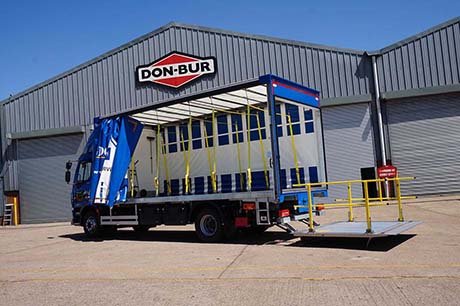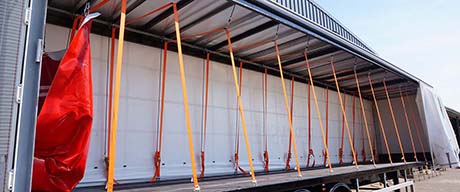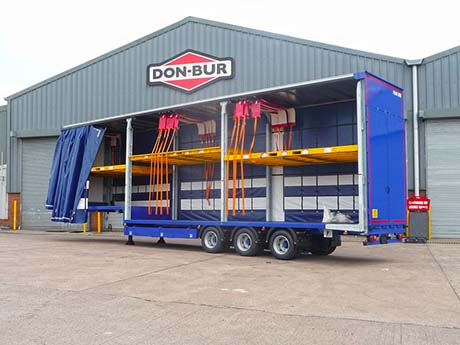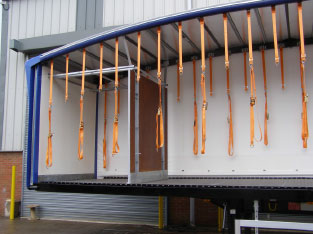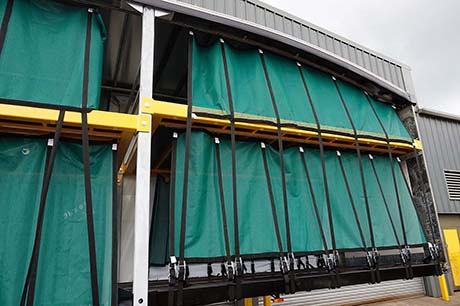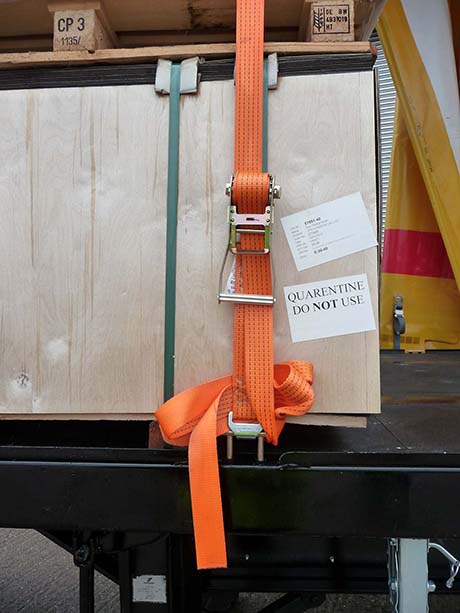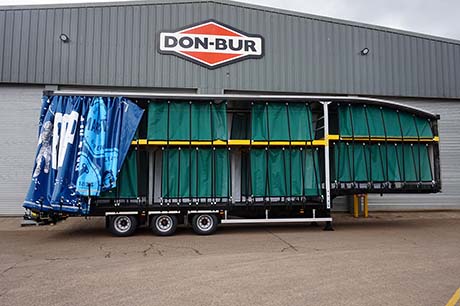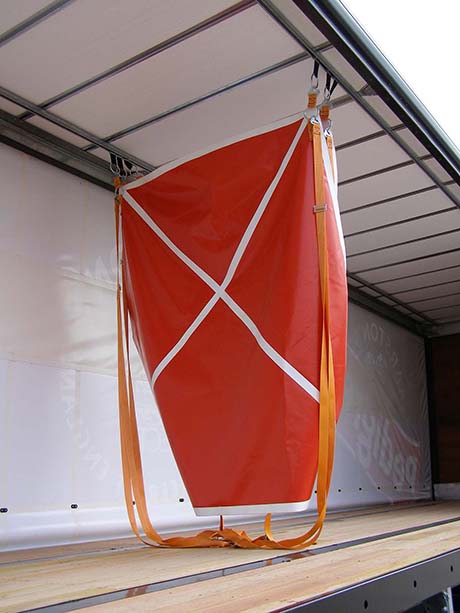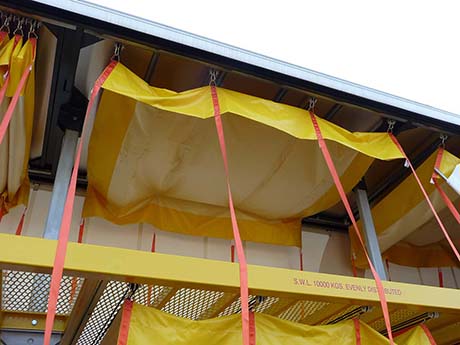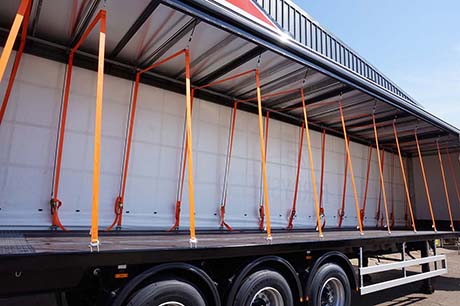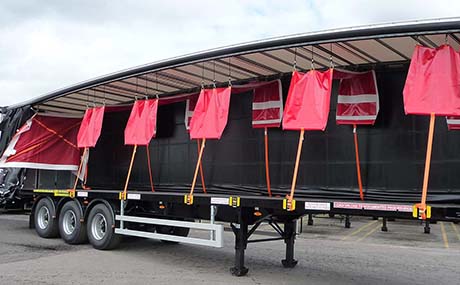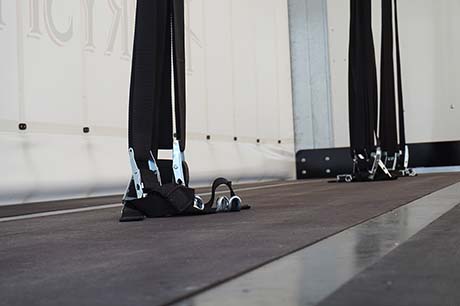
Understanding Load Restraint
Load restraint is perhaps one of the most discussed topics in the industry and getting it right is one of the trickiest challenges you'll have to cover.
First and foremost, operators have legal obligations laid out in (but not exhaustively) The Road Traffic Act 1988 and Regulation 100 of the Road Vehicles (Construction & Use) Regulations 1986 but these are quite generic.
In an operators holistic efforts to meet their legal expectations, they should abide by best practice in order to comply with DVSA expectations. Roadside enforcement will assess compliance against this best practice and may choose to penalise operators/drivers in accord with the severity of any defect (see categorisation of defects link at the base of this page).
Your primary source of information should be the digital guidance issued by the government titled "Securing loads on HGVs and goods vehicles" and a link to this guidance is provided below. This guidance has been generated by various stakeholders including the DVSA, HSE and other industry specialists.
This page contains key information and links designed to assist you, but if you have any questions not covered here, please contact us.
Primary Road Safety Legislation
The Road Traffic Act 1988 (as amended) states that:
""A Person is guilty of an offence if he uses, or causes or permits another to use, a motor vehicle or trailer on a road when:
a) the condition of the motor vehicle or trailer, or of its accessories or equipment, or
b) the purpose for which it is used, or
c) the number of passengers carried by it, or the manner in which they are carried, or
d) the weight, position or distribution of its load, or the manner in which it is secured,
is such that the use of the motor vehicle or trailer involves a danger of injury to any person"
Road Traffic Act 1988Regulation 100 of the Road Vehicles (Construction & Use) Regulations 1986 states that:
"1) A motor vehicle, every trailer drawn thereby and all parts and accessories of such vehicle and trailer shall at all times be in such condition … and the weight, distribution, packing and adjustment of the load of such vehicle and trailer shall at all times be such that no danger is caused or is likely to be caused to any person in or on the vehicle or trailer or on a road.
2) The load carried by a motor vehicle or trailer shall at all times be so secured, if necessary by physical restraint other than its own weight, and be in such a position, that neither danger nor nuisance is likely to be caused to any person or property by reason of the load or any part thereof falling or being blown from the vehicle or by reason of any other movement of the load or any part thereof in relation to the vehicle."
The Road Vehicles (Construction and Use) Regulations 1986
DfT | DVSA Guidance
The Dft/DVSA publish and regularly update full online load restraint guidance.
This guide has replaced 'Safety of loads on vehicles: code of practice' and 'Load securing: vehicle operator guidance'.
Securing loads on HGVs and goods vehicles
Standard EN 12195-1 & EN 12195-2 | Web Lashings
EN 12195-1 (Part 1) refers to calculations regarding the strength and number of load restraint straps required to safely restrain your load.
BS EN 12195-2 (Part 2) is the approved European standard for the rating of web lashings on road vehicles.
"The standard specifies the safety requirements for web lashing made from man-made fibres with flat woven webbings for multiple use and of lashing combinations with woven webbings for the safe surface transport of goods on road vehicles, e.g. trucks and trailers which are used on roads or located on vessels or on rail waggons and /or combinations thereof."
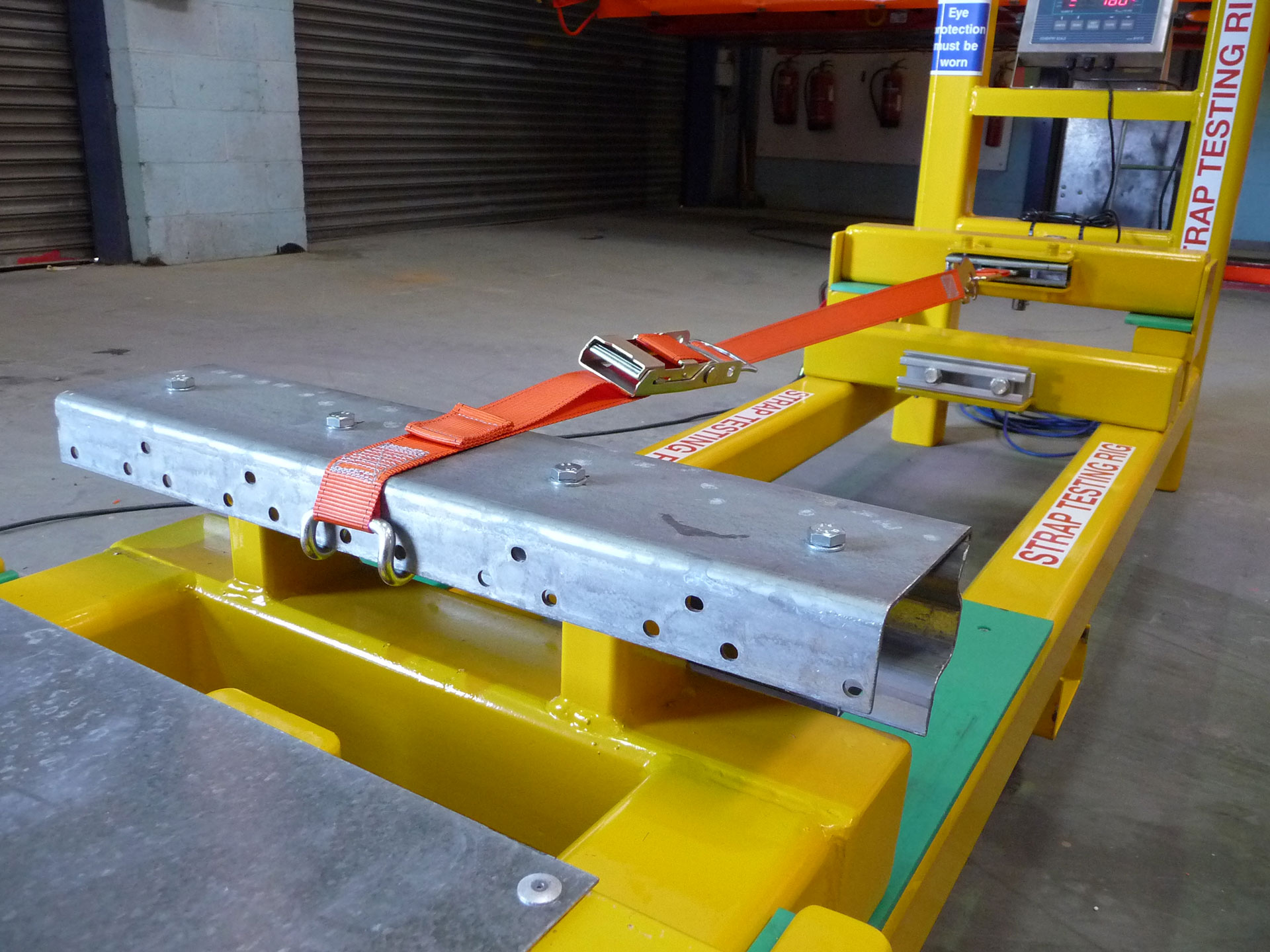

Standard EN 12640 | Lashing Points
BS EN 12640 is the approved European standard for lashing points on commercial vehicles for goods transportation.
"The standard specifies the minimum requirements and test methods for lashing points fitted to commercial vehicles and trailers with flatbed body construction of maximum total mass above 3,5 t and intended for general use."
What is a ‘lashing point’?
A ‘lashing point’ is a "securing device on a vehicle, to which a lashing may be directly attached".
Are you EN 12640 compliant?
To achieve EN 12640 compliance your lashing points must adhere to several parameters stated in EN 12640:2001, which include the way the lashing point is designed & constructed, the number of lashing points required for your operation and whereabouts you position your lashing points along your vehicle. Each of these variables is dependent upon your vehicles length, minimum distance between lashing points and your vehicles ‘permissible tensile load’ (how much weight your vehicle can legally carry).
Standard EN 12641-2 | Intermodal loading units and commercial vehicles. Tarpaulins - minimum requirements for curtainsiders
The difference compared to Part 1 of the Standard refers to the fact that these tarpaulins fulfill the cargo securing function when certifying the EN 12642 Code XL or EN 283 (for swap bodies). The Standard defines the requirements for reinforcement of the tarpaulin by the tensioning straps which shall not be remote from each other by more than 600 mm in a horizontal or vertical direction. The amount of straps on the sidewall length shall be at least 600 (sidewall length in mm - 600). Strength of vertical straps shall be ≥ 23 kN and horizontal straps ≥ 12 kN [3,10].
Although related, EN 12641-2 is not comparable with the superstructure standard EN 12642 (L or XL)
Standard EN 12642-XL
EN 12642-XL is a certified European bodywork load containment rating that relates to the strength and therefore ability of the bodywork to contain loads.
EN 12642-XL is not a legal requirement in the UK and you can achieve full DVSA compliance without the need for an EN 12642-XL bodywork rating. However, EN 12642-XL rated bodywork is seen by the DVSA as one possible contributory standard toward full compliance.

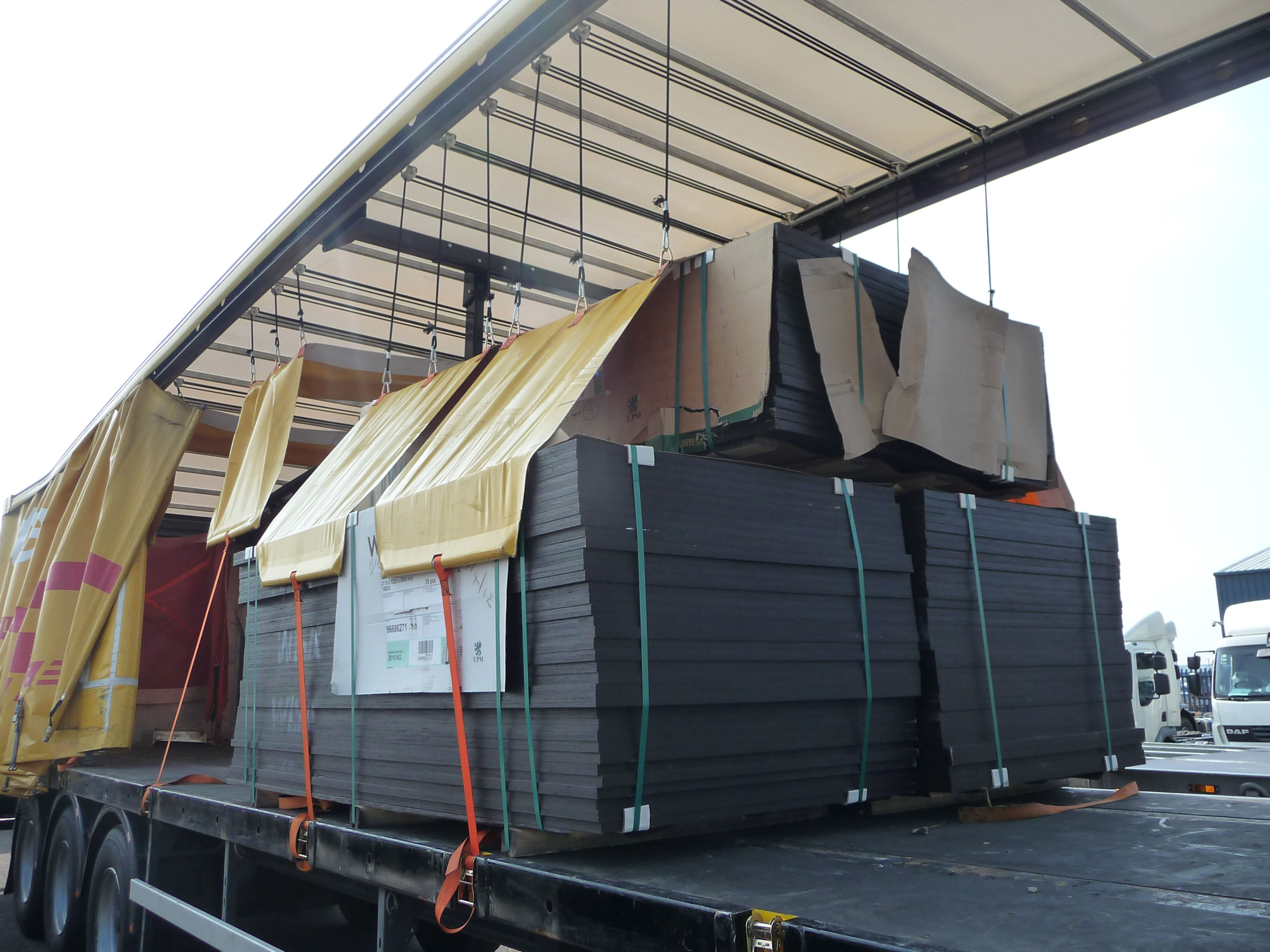
Solutions
Don-Bur designs and manufactures a wide variety of load restraint solutions to cater for the vast majority of load types.
Whether it be simple ratchet straps, transverse nets or a full bungee system, Don-Bur can customise the solution to suit your operation and budgetary needs
Load Restraint Feature Library
Load Restraint for the Brewery Industry
The law remains the same for brewers as it does for other operator types but there is some specific guidance relating to the carriage of barrels/ kegs.
In 2013, a number of stakeholders from the brewery industry were involved with the production of this valuable FTA Best Practice resource:
Load Securing for the Brewing & Drinks Industry
Published: Tue 16 Jan 2024
Updated: Thu 11 Apr 2024



